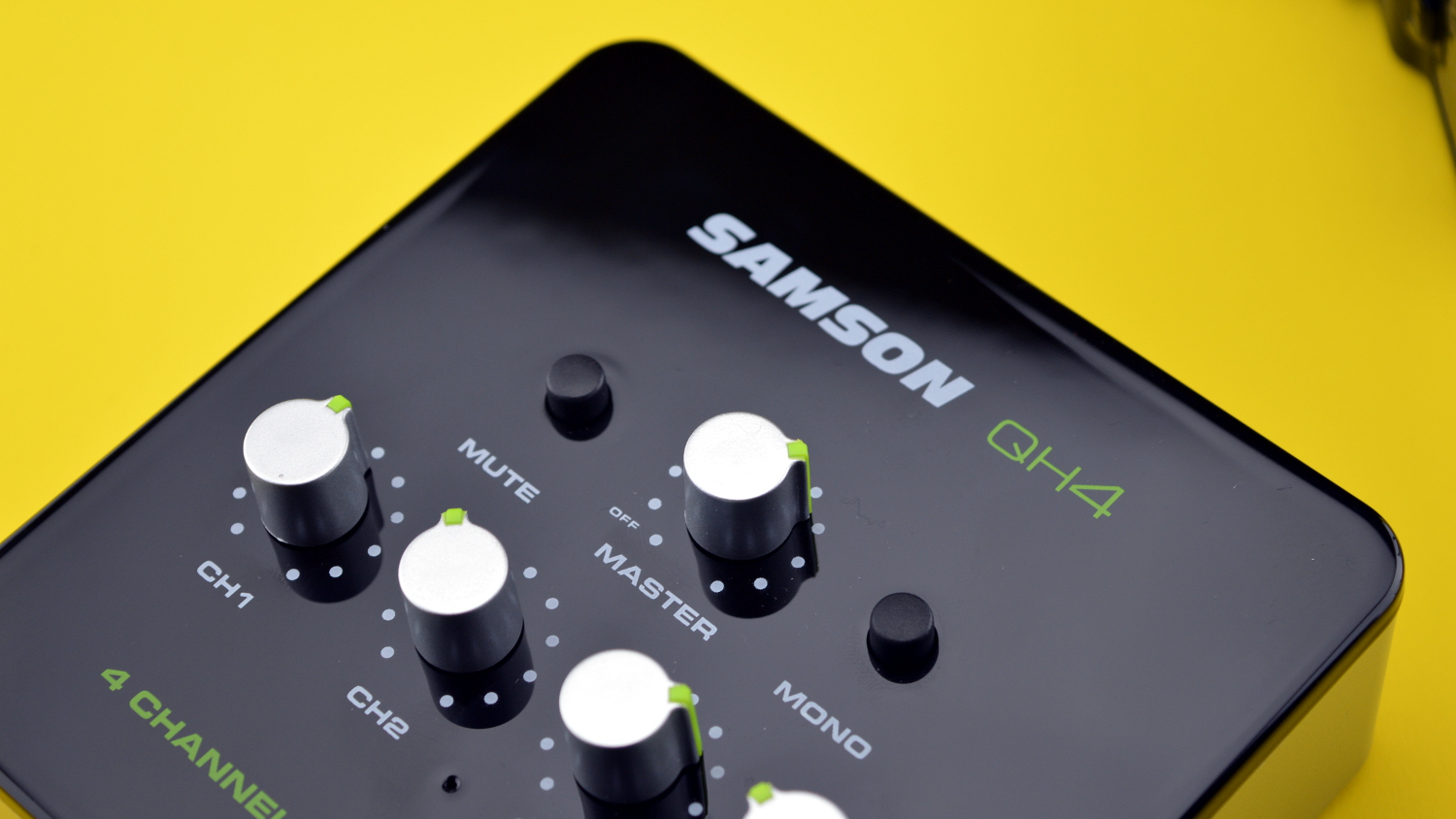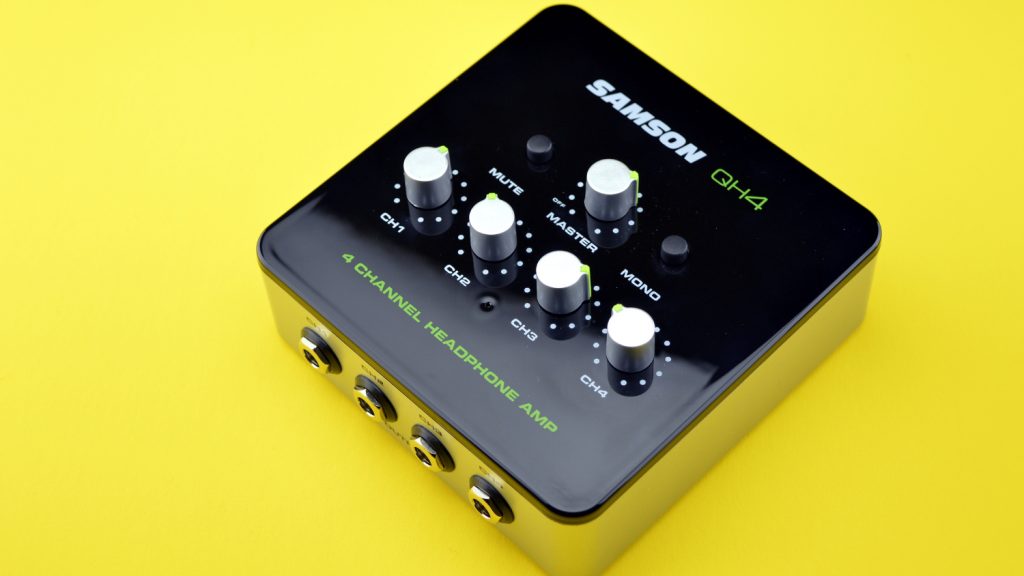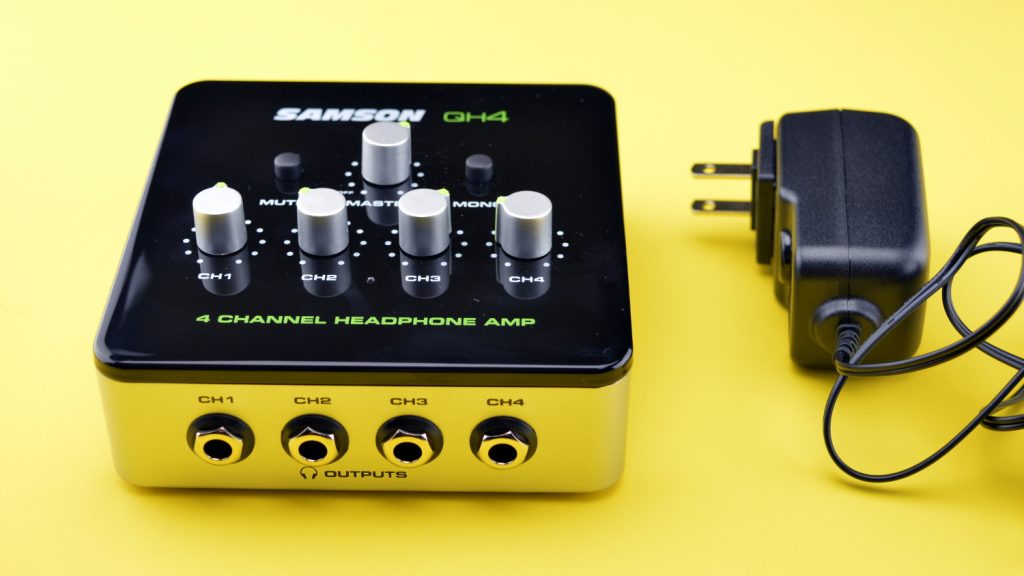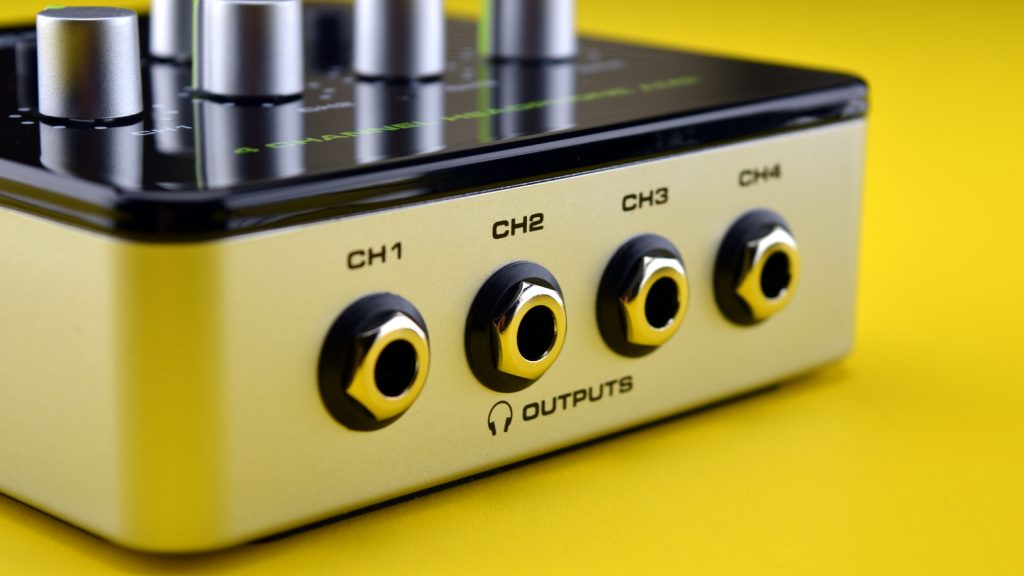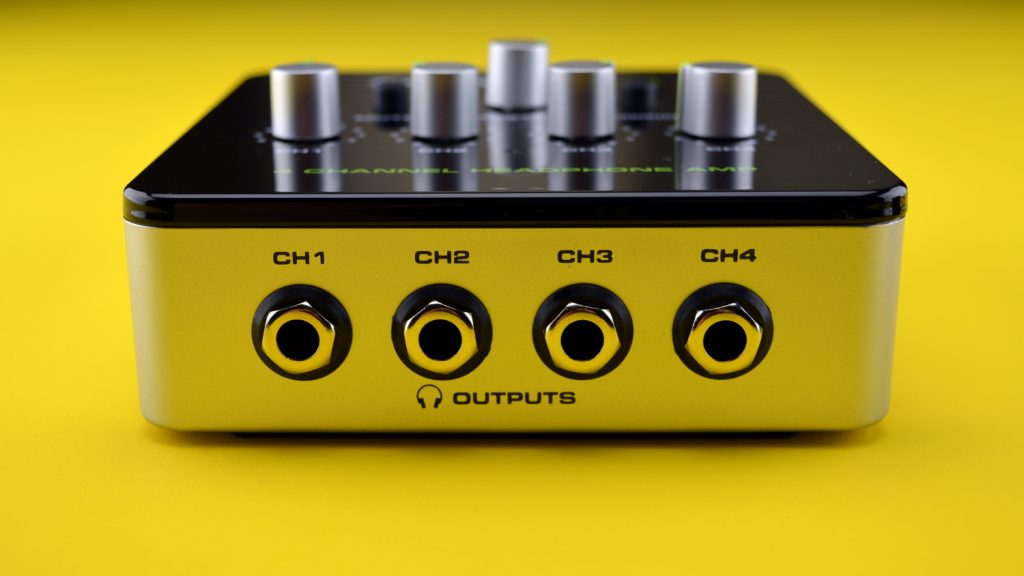Samson is perhaps best known as a manufacturer of microphones and headphones, but the company also makes a range of audio accessories — like headphone amplifiers. Its newest offering in the headphone amp space is a nice little unit aimed generally at home studio use, and it’s called the Samson QH4.
But just how does the Samson QH4 compare to other headphone amps on the market? We put it to the test to find out.
Design
The first thing to note about the Samson QH4 is its design, and while it looks basic, it looks quite nice. Sure, it’s not the fanciest thing in the world — that prize is still reserved for amplifiers like the beautifully-built Feliks Audio Espressivo — but the design is built to be functional and modern, and it achieves both of those things quite well.
The Samson QH4 is generally built out of plastic, and while it seems quite well built, a little more metal would be welcome. Of course, part of that is keeping cost down — and the amplifier is quite cheap.
The color-scheme of the headphone amp is mostly black and silver along with green and white highlights. While, for the most part, that looks fine, we can’t help but assume that the green could be switched up to something slightly more sleek.
In any case, the functionality of the design is more important than the look. On the back of the amplifier, you’ll find the main left and right channels, which come in the form of balanced 1/4″ ports, as well as a 1/8″ aux input and output, which is perfect for playing music from your phone or another line level device. Last but not least is the power input.
On the top of the device are the controls. You’ll get an LED power indicator, as well as a main volume control and four independent headphone controls for each headphone output. You’ll also get a master mute button and a mono button, which can come in handy in the studio, especially if you’re mixing.
On the front, you’ll find four basic 1/4″ headphone outputs — plain and simple. The concept of inputs on the back and outputs on the front isn’t new by any means, but it works well and we think each of the ports is exactly where it should be.
In general, the Samson QH4 looks fine, but a slightly better build quality would be nice.
Performance
Let’s make something clear — the Samson QH4 isn’t built to augment the sound of audio by any means, but rather duplicate incoming audio so that multiple people can listen at the same time. That’s largely the difference between studio amplifiers and home use audiophile amplifiers — while studio amplifiers are built for functionality, home use amplifiers are built to enhance the sound for audiophile use. That’s why, while we would normally here talk about how an amp “sounds,” in this case we’re going to instead discuss how it “performs.” That means how easy it is to use, and how well it achieves its goal.
Thankfully, perform well it does. The amp is extremely easy to use — while some might instead need something with more than one balanced set of inputs, for home studio use where volume is the only changing factor, this amplifier is a great choice.
The Samson QH4 is built to amplify audio for headphones, and it does that very well.
Conclusions
 The Samson QH4 is decently built and looks fine, but the real value here comes from how well it performs and how easy it is to use for the price that it comes at. This is best used for home studios and beyond that you may want to upgrade to something a little more capable — and if you want to stick with Samson the company has plenty on offer, like the S-Class series. If you’re home studio, however, needs a decent headphone system at a super-low price, the Samson QH4 is an excellent choice for you. So much so that it’s worthy of the Headphone Review Bronze Medal.
The Samson QH4 is decently built and looks fine, but the real value here comes from how well it performs and how easy it is to use for the price that it comes at. This is best used for home studios and beyond that you may want to upgrade to something a little more capable — and if you want to stick with Samson the company has plenty on offer, like the S-Class series. If you’re home studio, however, needs a decent headphone system at a super-low price, the Samson QH4 is an excellent choice for you. So much so that it’s worthy of the Headphone Review Bronze Medal.
| Store | Price |
|---|---|
 |
$69.99 |
| Samson | $69.99 |
| Frequency response | Inputs | ||
|---|---|---|---|
| Noise floor | -114dBu | Outputs | Stereo 1/4″ (4) Stereo 1/8″ |
| Maximum output | 8.3dBu | Power requirements | 15VDC |
| Total harmonic distortion | Unknown | Dimensions | Unknown |
| Power output | Unknown | Weight | Unknown |


